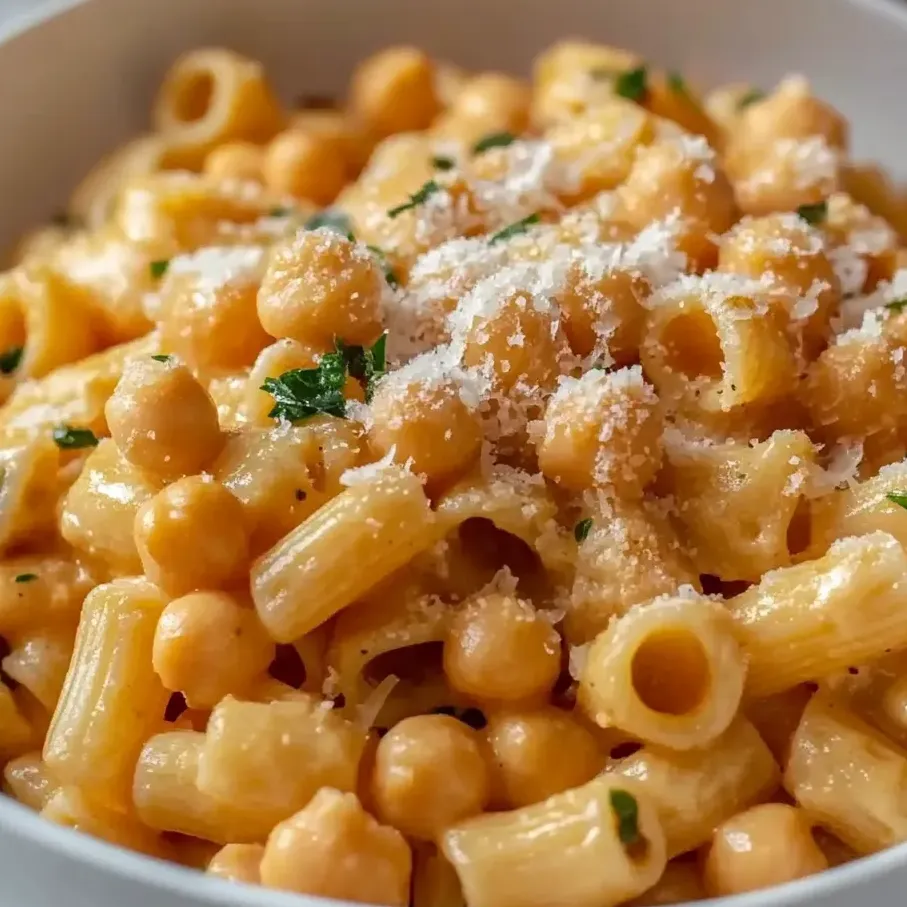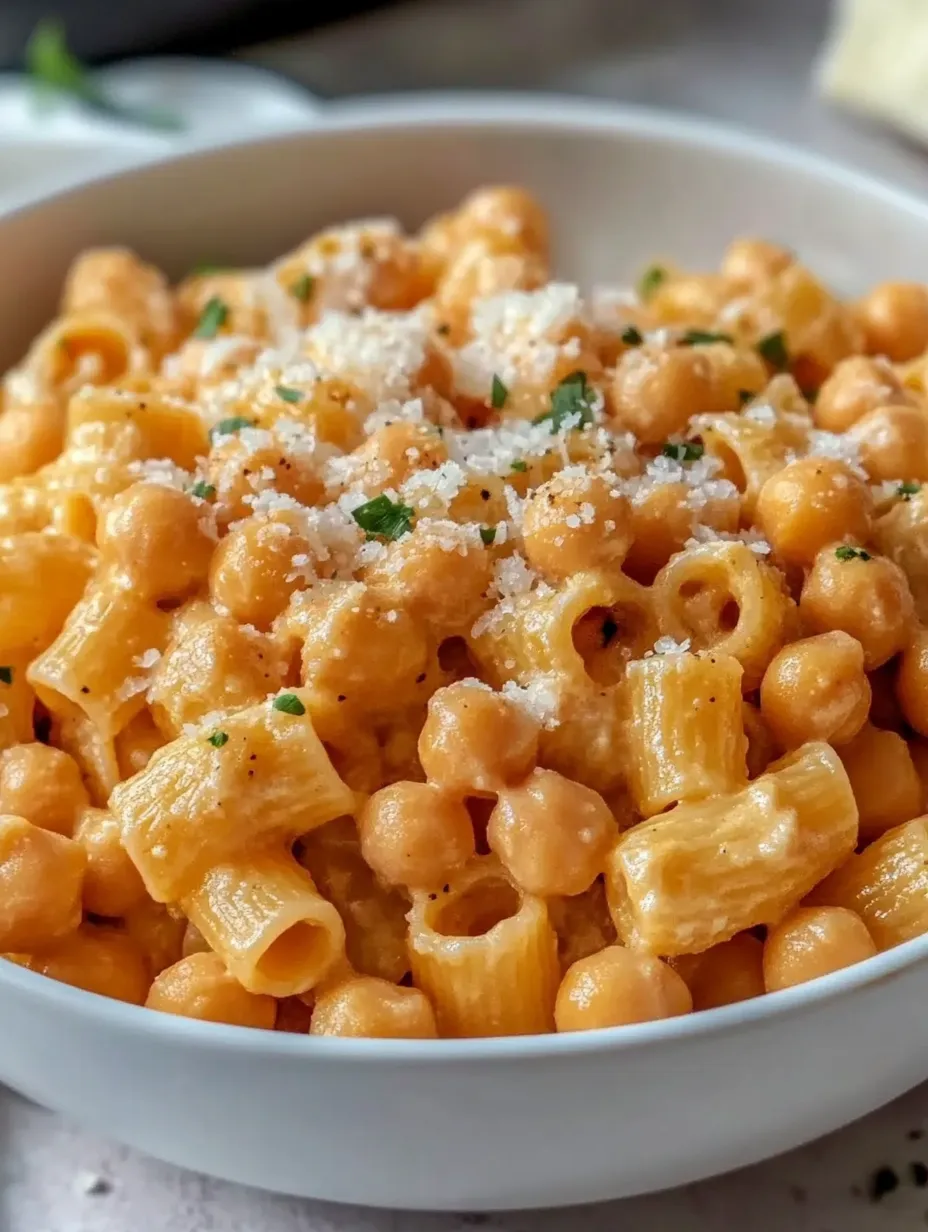 Save
Save
This pasta e ceci brings together humble ingredients to create a comforting Italian classic that has stood the test of time. The combination of tender pasta and creamy chickpeas swimming in a savory broth creates a dish that feels like a warm hug in bowl form.
I first made this dish during a particularly stressful week when I needed something quick yet comforting. The way the starchy pasta water combines with the crushed chickpeas creates an almost creamy texture without any cream. Now it's my go to weeknight dinner when I want something satisfying without much fuss.
Ingredients
- Chickpeas: Provide the hearty protein base and create creaminess when partially mashed
- Ditalini pasta: Is traditional but any small pasta works beautifully
- White onion: Adds sweet aromatic foundation
- Garlic cloves: Provide essential flavor depth
- Fresh rosemary: Brings an earthy fragrance that defines the dish
- Tomato paste: Concentrates umami flavor and adds rich color
- Chili flakes: Provide gentle warmth rather than intense heat
- Dry white wine: Deglazes the pan and adds subtle acidity
- Vegetable stock: Forms the base of the silky sauce
- Pecorino cheese: Brings salty richness and creaminess
Step-by-Step Instructions
- Sofrito Base:
- Heat olive oil in a skillet over medium heat until shimmering but not smoking. Add the diced onion and cook for 5 to 6 minutes until they become translucent but not browned. This creates the aromatic foundation for the entire dish. Add the sliced garlic and cook for just 1 to 2 minutes more until fragrant. Be vigilant here as garlic can burn quickly and become bitter.
- Building Flavor:
- Add the diced rosemary and chili flakes to the skillet and stir constantly for about 60 seconds. The heat will release the essential oils in the rosemary and bloom the chili flakes. Next add the tomato paste and cook it for about 2 minutes stirring frequently. This caramelizes the sugars in the tomato paste and intensifies its flavor significantly.
- Creating The Base:
- Pour in the white wine or white wine vinegar to deglaze the pan scraping up any flavorful bits stuck to the bottom of the skillet. Allow this to cook down for 2 minutes which removes the alcohol but keeps the flavor. Add the chickpeas and vegetable stock bringing everything to a gentle simmer. Using the back of your spoon crush about a quarter of the chickpeas against the side of the pan. This releases their starch and helps thicken the sauce naturally.
- One Pot Magic:
- Add the dry ditalini pasta directly to the simmering liquid. Stir frequently to prevent sticking and cook until the pasta reaches al dente about 6 to 7 minutes. The pasta will absorb the flavorful broth and release additional starch creating a silky sauce. If the mixture becomes too thick add a splash more stock or water.
- Finishing Touch:
- Remove the skillet from heat and immediately stir in the grated Pecorino cheese. The residual heat will melt it into the sauce creating a creamy emulsion without becoming stringy. Taste and adjust seasoning with salt if needed.
- Serving:
- Ladle the pasta e ceci into warm bowls. The consistency should be somewhere between a pasta dish and a thick soup. Garnish generously with black pepper additional Pecorino cheese and a drizzle of your best olive oil. Add more chili flakes or fresh parsley if desired.

The true secret to this dish is crushing some of the chickpeas which creates a naturally creamy texture without any dairy needed. I learned this technique from an elderly Italian neighbor who insisted this was the difference between good and exceptional pasta e ceci. She would always say the pasta should be swimming not drowning in the sauce and those crushed chickpeas were the key to the perfect consistency.
Customization Ideas
This pasta e ceci welcomes customization based on what you have on hand. Try adding diced carrots and celery along with the onions for a more complex sofrito base. Leafy greens like kale or spinach can be stirred in during the final minutes of cooking for added nutrition and color. For a meat version consider adding pancetta or bacon with the onions for a smoky depth.
Make Ahead And Storage
This dish actually improves with time as the flavors meld together. You can prepare it completely up to two days ahead and reheat gently on the stovetop with a splash of water or stock to loosen the sauce. The pasta will continue absorbing liquid as it sits so you may need to adjust the consistency when reheating. Leftovers will keep in an airtight container in the refrigerator for up to five days making it perfect for weekly meal planning.
Historical Context
Pasta e ceci represents the resourceful cooking style of cucina povera or poor kitchen that defines much of traditional Italian cuisine. Dating back centuries this dish exemplifies how Italian home cooks transformed affordable pantry ingredients into something truly special. Regional variations exist throughout Italy with some versions being more brothlike while others are thicker almost stew like. In Rome pasta e ceci is traditionally enjoyed on Fridays as part of the Catholic tradition of abstaining from meat.

Frequently Asked Questions
- → Can I use different types of pasta for this dish?
Yes, while ditalini is traditional, you can substitute other small pasta shapes like orzo, small shells, or broken spaghetti. Just adjust cooking time according to package instructions for your chosen pasta.
- → How can I make this dish vegetarian or vegan?
The dish is already vegetarian if using vegetable stock. For a vegan version, simply omit the Pecorino cheese or replace it with a vegan cheese alternative or nutritional yeast for a similar savory flavor.
- → What's the best way to reheat leftovers?
Reheat in a saucepan over medium-low heat with a splash of water or broth to loosen the consistency. Stir occasionally until heated through. The pasta will have absorbed more liquid during storage, so additional liquid helps restore the original texture.
- → Can I use canned or dried chickpeas?
This recipe calls for a 400g tin of drained chickpeas for convenience. If using dried chickpeas, soak them overnight and cook them until tender before adding to the recipe. You'll need approximately 1½ cups of cooked chickpeas.
- → What can I substitute for white wine?
If you prefer not to use white wine or white wine vinegar, you can substitute with additional vegetable stock and a squeeze of lemon juice to add acidity. Apple cider vinegar diluted with a bit of water can also work as an alternative.
- → How do I make this dish thicker or thinner?
For a thicker consistency, crush more chickpeas against the side of the pan. For a thinner, more soup-like version, add additional vegetable stock. The dish will naturally thicken as it cools and the pasta continues to absorb liquid.
